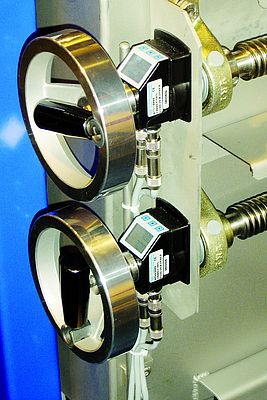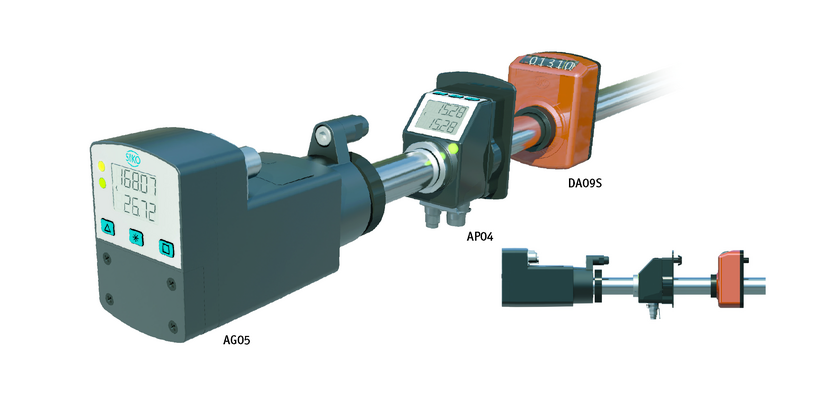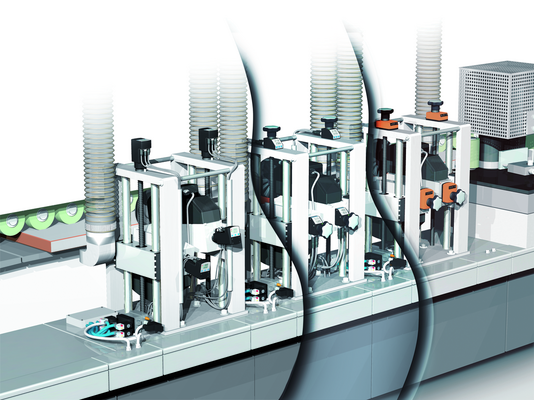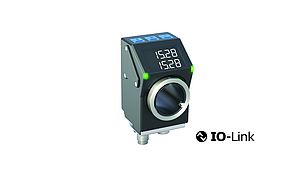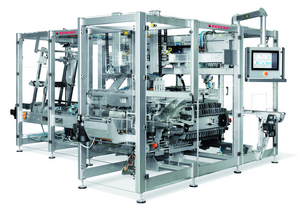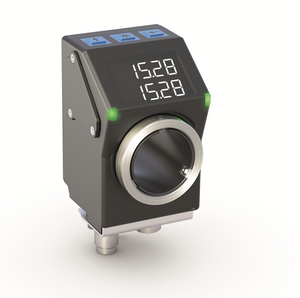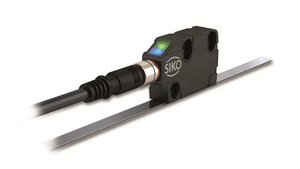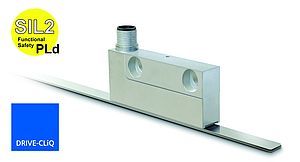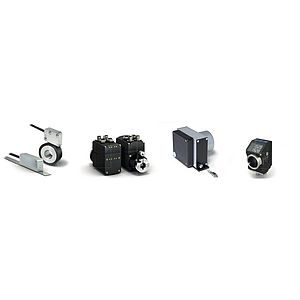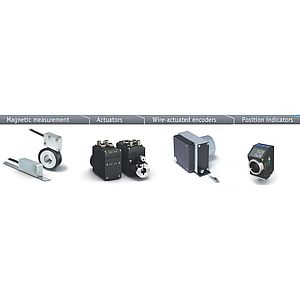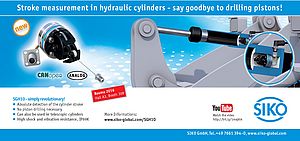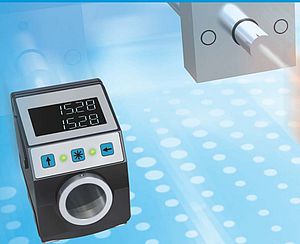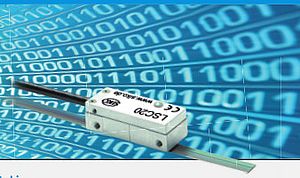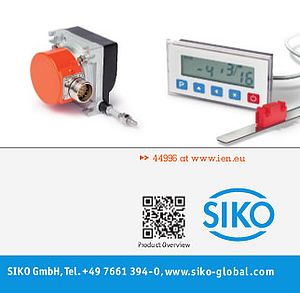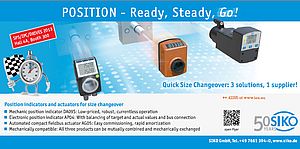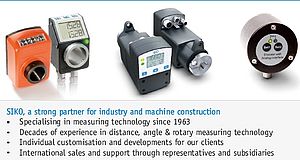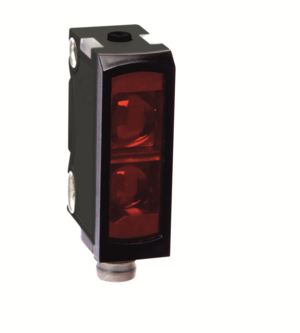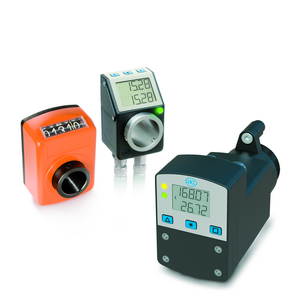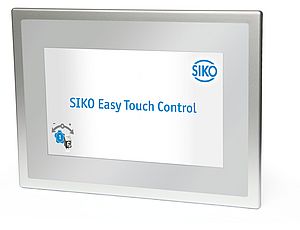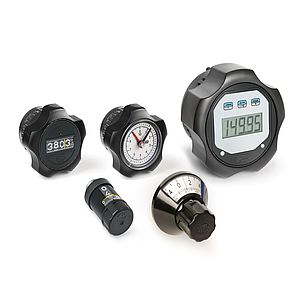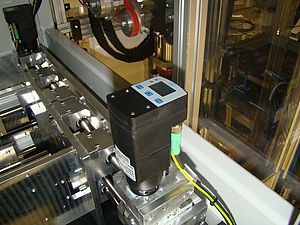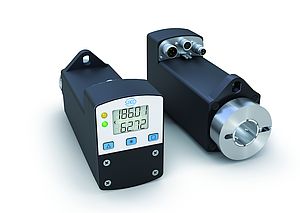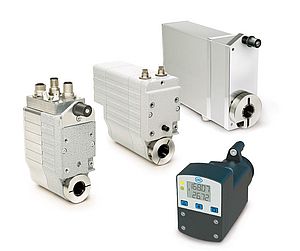Many machines are equipped with setting options. For example, size changeover of the axes and spindles in production are frequently required for packaging, wood or paper processing machines. Corresponding to the adjustment frequency of these axes and spindles, the market offers different solutions for adjusting the sizes, each with significant advantages.
Manual, electronically monitored or fully automatic size changeover
1. Manual size changeover
Digital mechanical position indicators have proven themselves for decades for economically priced and reliable positioning and still have their place today in the digital and networked age.
Position indicators with manual adjustment, such as type DA09S manufactured by SIKO, are still the first choice, today and in the future, if machine sizes require only infrequent change.
2. Monitored size changeover
Bus-capable position indicators, such as the SIKO AP04, with target/actual value comparison and status display on guided manual adjustment, offer some technical advantages compared to purely mechanical position indicators. The machine operator can therefore tell at a glance whether a machine axis is already set correctly or whether adjustment is required. This is made possible through optical status indication, i.e. an easily visible red or green lit LED. This leads to high process reliability and reproducibility. Basic parameters can also be freely programmed. Position indicator AP04 as product version AP04S is also available for position determination of directly linear slide units.
Electronic position indicators are ideal if sizes need to be changed over several times a day and produce an enhanced quality standard through the integrated target/actual comparison.
3. Automated size changeover
Compact field bus actuating drives, such as the SIKO AG05, stand out through especially short cycle or retooling times and provide exact and fully automated positioning of machine axes. This results in high productivity, production continuity and enhanced profitability.
Michael Schwab, DriveLine product manager at SIKO GmbH in Buchenbach calculates: "If the machine offers a total of 14 adjustment options, which are partially difficult to access, two workers will need approximately 10 minutes for a complete size changeover with manual setup. Now, if all axes are automated with an actuating drive and the product changes once per hour, this results in a reduction of the setup time and output increase of almost 15 percent."
Standby times of machines and plants can be significantly reduced through innovative compact actuating drives. This reduces, on the one hand, unproductive idle times and on the other hand, a contribution to environmental protection is made by saving energy (compressed air and heat/refrigeration output). Small available installation spaces no longer need to be a no-go criterion for compact drives; the SIKO AG05 is about as small as a 0.33 l beverage can.
Users of actuating drives for frequent size changeovers state an increase in production output of up to 30 percent compared to manual adjustment. Thus, actuating drives can quickly pay off also for the machine builder because it provides the machine operator with competitive advantages and so for the builder as well.
Automated compact field bus actuating drives are then the first choice for all users when especially frequent size changeovers must be performed and particularly high demands are placed on quality.
Attachment compatibility & retrofit
All SIKO position indicators DA09S, AP04 and the compact actuating drive AG05 can be combined and are mechanically interchangeable, thus also compatible in terms of attachment. Thus, machine manufacturers can individually configure and offer the automation level of their machine according to the preference of their customer. It makes sense to equip axes which must be frequently adjusted with compact actuating drives and to position more economically priced position indicators for axes that need to be seldom adjusted.


